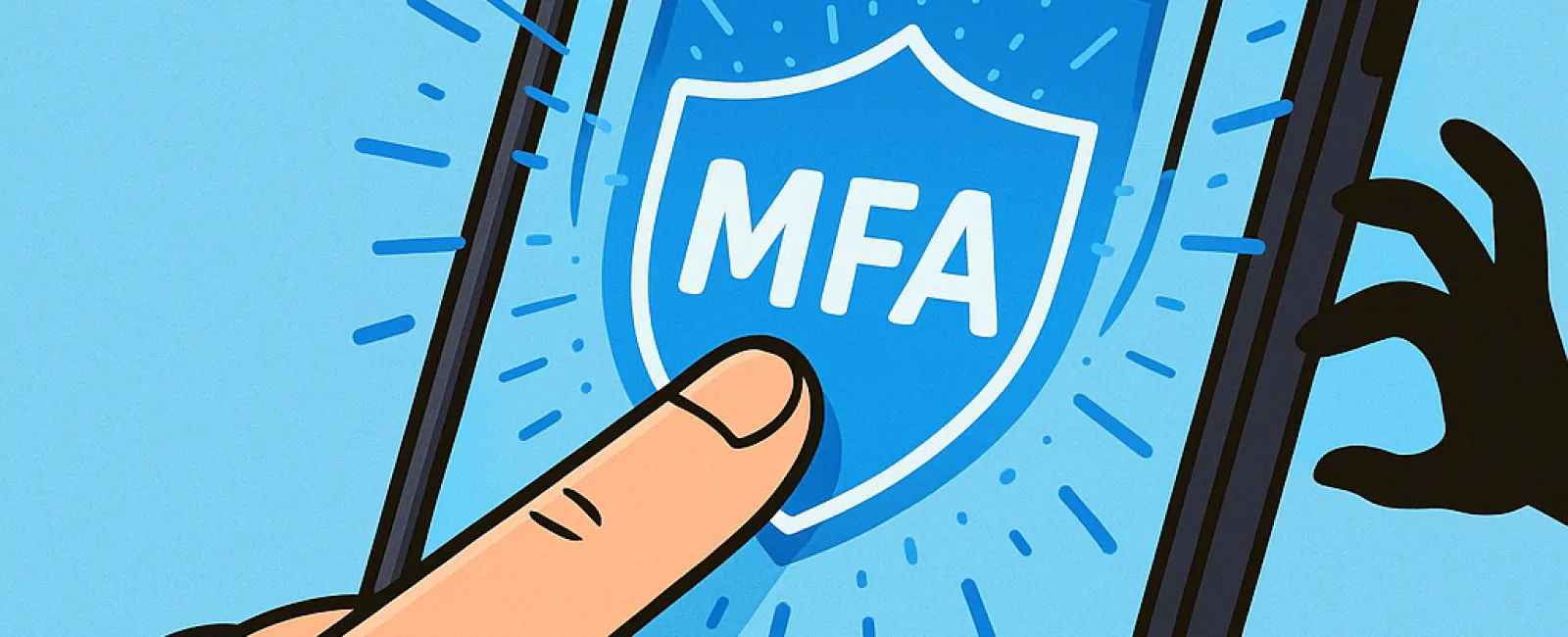October 27, 2025
You wouldn't drive without buckling your seatbelt or leave your office door unlocked overnight. So why browse the internet without activating multifactor authentication (MFA)?
MFA acts as a robust second lock for your digital security. Instead of depending solely on a password—which can be stolen, guessed, or phished—it layers an additional barrier, such as a text verification code, authentication app prompt, or fingerprint scan. Even if a hacker acquires your password, lacking that extra verification step makes it impossible to access your account.
A Single Extra Step Secures Your Entire Online World
Think of your password as locking your front door. Activating MFA is like arming a comprehensive home security system before bed. While it may seem optional, having this backup ensures you remain protected even if one security element fails.
MFA adds a fast, simple verification step confirming it's you logging in. Known also as "two-step verification," "two-factor authentication," or "one-time password," all these terms mean requiring two or more methods to verify your identity before access is granted to your private information.
MFA appears in many forms: confirmation emails when creating accounts, security questions for banks, text message codes, push notifications, or phone call verifications. Most methods require just a quick tap or code entry, making security painless.
How MFA Protects You in Real-Life Scenarios
For you, MFA means a quick approval click or code input, but for hackers, it's a frustrating obstacle. If an unauthorized login attempt occurs, MFA immediately alerts you via notification or requires a code, exposing the breach and giving you the chance to strengthen your password before any data gets compromised. Without MFA, your data might already be stolen.
Even if hackers trick employees into revealing passwords, MFA blocks their access without the additional verification. As Microsoft's research demonstrates, enabling MFA reduces account compromise risk by over 99.2%, and for accounts with MFA, the defense jumps to 99.99%.
Where You Should Always Activate MFA
Key areas to prioritize MFA include:
- Banking and financial applications
- Email and cloud storage platforms
- Major social media accounts
- Work-related logins involving client or sensitive company data
Activating MFA is usually straightforward. Most large platforms provide built-in MFA options—simply choose your preferred method and integrate it into your daily routine. Implementing an authenticator app especially boosts protection for employee logins.
In essence, MFA offers a quick, cost-free way to block the vast majority of account hacking attempts. Investing just a few minutes setting it up today can spare you from significant data loss and hassle in the future.
The easiest way to implement MFA is by consulting with your IT provider. A skilled managed service provider (MSP) will ensure a seamless setup. If you're looking for cybersecurity expertise, click here or call us at 920-818-0900 to arrange a 15-Minute Discovery Call with our dedicated team now.



